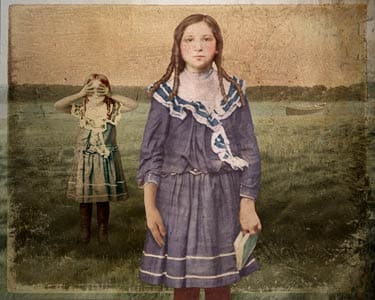by Merle Hoffman
There is one place where the definition of gender remains binary – in the womb. When it comes to sonograms, amniocentesis and standard pre-natal testing, there are no nuances. Here, the pronouncement, “It’s a girl,” can translate into fierce and instant parental rejection. The fact is that when the issue is “sex selection abortion,” the same sex is always being selected — female.

Abortion has been regularly used as a method of sex selection in certain regions of the world, particularly China and India, where sons are more highly prized than daughters. But it was something of a surprise to doctors in Sweden. When the mother of two daughters arrived at Mälaren Hospital, seeking tests to determine the sex of her fetus. If female, she declared, she intended to abort.
The doctors were concerned enough to bring the issue to the National Board of Health and Welfare, inquiring how to handle requests where they felt “pressured to examine the fetus’s gender” without a clinical diagnosis. The Board came back and said that requests for abortions based on a child’s gender cannot be refused.
Here in the U.S. a recent New York Times article reported slight statistical variations among Americans of Chinese, Korean or Indian descent, suggesting that the cultural preference for boys in these societies is continuing in this country.
The story reported on research conducted by Douglas Almond and Lena Edlund and published in the Proceedings of the National Academy of Sciences. The researchers’ say their analysis of the 2000 Census shows that the odds increase beyond what is standard for a third child to be a boy in Asian-American families from China, Korea and India if the family did not already have a son. The data “suggest that in a sub-population with a traditional son preference, the technologies are being used to generate male births when preceding births are female,” they wrote in the paper.
Even though sex selection is illegal in India, and China has been struggling with this issue for years, Edlund, a professor in the Department of Economics at Columbia University, told the Times, “That this is going on in the United States — people were blown away by this.”
Blown away indeed. Most people find the idea of sex selection abortion unacceptable, and a Zogby Interactive poll taken in March 2006 found that 86 percent of Americans supported a prohibition on the practice. Sex-selection abortion has been banned in Illinois, Pennsylvanian and most recently in Oklahoma. Representative Trent Franks– a pro-life member of Congress from Arizona — introduced the Susan B. Anthony and Frederick Douglass Prenatal Nondiscrimination Act of 2009, a bill that would ban sex-selection or race-based abortions.
In an op-ed in The Washington Times, Trent wrote,“Regardless of one’s position on abortion, this form of discrimination should horrify every American. The idea of killing a baby simply because she is a girl is reprehensible.”
Posing the Right Question
While sex selection abortion allows women to make what is, in a sense, the ultimate in supposedly informed consumerism, it also can work to create a world where being female is viewed as the primary and most terminal of birth defects.
| “It’s about separating the chooser from the choice” |
News reports describe a new test being marketed that can determine the sex of a fetus after only 10 weeks, rather than the 20 weeks of the traditional sonogram. In light of these developments, Boston Globe columnist Jeff Jacoby asked, “What kind of feminist would it be who could contemplate the use of abortion to eliminate ever-greater numbers of girls, and not cry out in horror?”
Good question. And one that I personally asked myself in 1991 when I counseled a Hindu woman who was 18 weeks pregnant, married with two sons and wanted the abortion because the sonogram showed the fetus she was carrying was female.
This is the place where my feminism and pro-choice philosophies collided violently. I sat across from her and thought of her fetus and the “primal birth defect” it carried and felt rage and despair, as if it were me she would be negating.
I so much wanted to say: ”No. STOP! You should not.” Not “You cannot,” but “You should not.” Yes, this feminist makes judgments — value judgments — and, sometimes, I disagree profoundly with some women’s choices.
I would not personally make a decision to abort on that basis — or for some of the other reasons that women present themselves for abortions.
But I have spent the better part of my life defending the principle of reproductive freedom and have provided the service to thousands of women for over 38 years because, ultimately, women do and should have the right to make what may be to others the wrong choice.
It’s about separating the chooser from the choice.

The Random House Webster College Dictionary defines choice as the right, power or opportunity to choose.
When an individual makes a choice, it is the act of “the making,” the active will and power of choosing itself that has unconditional value, not the result of the choosing. The only absolute in this equation is the one who chooses, that is, it is the individual woman who is the active moral agent in the decision-making process and not the state, the court or any political body.
The choice can be morally good, or not. This, of course, brings into view the nature of morality. If an individual has an absolutist value that all abortions, for whatever reason, are evil, then there is no further discussion. The raped nine-year-old, the incested 10-year-old, whomever-under-whatever circumstances: all are committing an evil act. There can be no possibility of choice because a woman choosing an abortion is a generic evil which should preclude the choice itself.
Interestingly enough, with Roe v. Wade in the background giving women the opportunity not to be pregnant, the act of continuing a pregnancy is more of a “choice” than it ever was historically. Each time a woman actively continues with her pregnancy, the ”wantedness” of every child increases.
Some believe that the choice of abortion is wrong in all places for all time. But attitudes about abortion are situational, historic and geographic.
My work to open Choices East, a satellite of Choices Women’s Medical Center in New York, in the former Soviet Union was inspired by a 35-year-old woman who came to our medical center for her 36th abortion. Like so many other Russian émigré women living in New York, she was violently opposed to using birth control because her Russian doctor taught her that “the Pill” was far more dangerous than repeat abortions. This misinformation benefited Russian physicians because they could earn extra money doing abortions on women in their homes to supplement their three dollars a month salary. Other forms of contraception were unavailable for all practical purposes. For these women, the “issue” of abortion posed no questions of morality, ethics, or women’s rights versus fetal life. There was only the harsh reality that sex rarely came without anxiety and that the price one often paid for it was high and dangerous.
Are these women who have no other choice continually making the wrong one?
Are the women of China and India who are so much a product of their paternalistic and misogynistic cultures making the wrong choice when they want a child who will not join their husband’s families after marriage or when they want sons to take care of parents as they age, as are the practices in their societies?
| “Attitudes about abortion are situational, historic and geographic” |
Are they making a wrong choice if the results of their choice determine their ability and their family’s ability to survive? When and where is a choice right or wrong? And, according to whose dictates?
If we, in fact, say “trust women,” then we are assuming that we should also trust them when we feel that the choice they are making is wrong for us personally, or wrong in our view of general ethical principles.
The issue of sex selection abortion is difficult because it is a place where the rights and values of the chooser clash violently with the nature of the choice.
Morality and Human Rights
Long time colleague Frances Kissling, writing in Salon describes a hypothetical scenario that she was presented with at a Planned Parenthood conference 15 years ago. Asked whether or not, if she were a doctor, she would provide a sex selection abortion, she said. “I wouldn’t do it,” but thought a policy should be implemented that was “open to referring women to providers who do.”
She goes on to say, “Just because something is legal — and should be legal — does not mean it is always ethical….If pro-choice advocates follow the example of those opposed to abortion and present only one value — a women’s right to make this decision — as the only ethical consideration worth discussing in difficult cases, do we not become as extremist as we say they are?”
Kissling compresses all the myriad pro-choice thinking into one collective body with the same interests that arbitrate morality. By implying that defending a woman’s fundamental right to choose is a potentially extremist position, and calling choice “single value ethics,” as she does in the article, Kissling both diminishes and disregards individual women’s ethical decisions and presents values in the collective absolute. There is no conceptual or philosophical equality here To accept the language of the opposition is to cede our moral compass.

Unlike Kissling who believes that “there is a point where our respect for potential life, for that individual fetus, should outweigh a woman’s desire, even need, not to be pregnant,” Marianne Mollmann of Human Rights Watch offers a different perspective: “The solution to the prevalence of sex-selective abortion is to remove the motivation (emotional or real) behind the procedure by advancing women’s human rights and their economic and social equality,” she wrote in a June commentary.
Yes, the solution to the dilemma of the chooser and the choice is to create a world where women truly have both equal and human rights. The solution is to focus on changing the need for the choice of abortion, not to criminalize the chooser.
Every day at Choices, women go into the counseling sessions and answer the question, “Why are you having this abortion?” Not infrequently, they answer with a statement like “Oh I’m not at all like all the others in the waiting room, I really wanted to keep this pregnancy, but…”
It’s in the but that the reality of abortion lies.
Practitioners who counsel women seeking abortions do an exercise called “the last abortion.” The participants choose one woman among six who will be allowed to receive the last abortion on earth. It is an exercise in individual ethics and forces one to confront her own prejudices. There is an orphaned teenager, a victim of rape, a woman carrying a medically deformed fetus, a 46-year-old woman with HIV, a 12-year-old, and a graduate student who wants to finish her Ph.D. They all have good reasons, because all the reasons are theirs. And in the end, that is the answer: All the reasons are theirs.
If you were the chooser — what would be your choice?
Merle Hoffman is the Publisher and Editor-in-Chief of On The Issues Magazine. She is the Founder, President and CEO of CHOICES Women’s Medical Center.
What’s your answer? Click here.
See more Merle Hoffman Editorials.
Also see Busting Bogus Biology and Beliefs by Mahin Hassibi in this edition of On The Issues Magazine.
